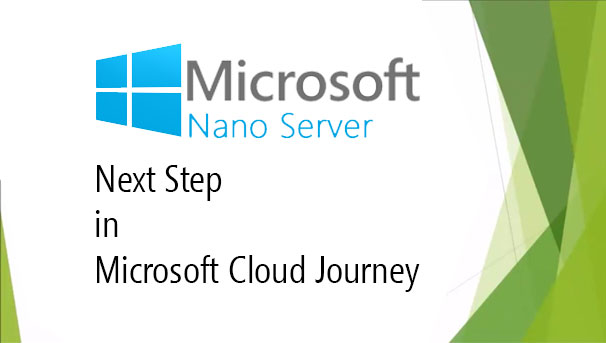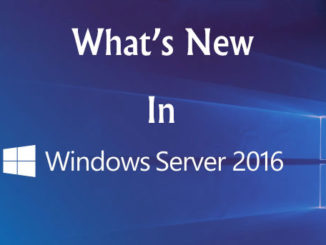
Microsoft announced new container technologies as well as Nano Server, a purpose-built operating system designed to run born-in-the-cloud applications and containers. As customers adopt modern applications and next-generation cloud technologies, they need an OS that delivers speed, agility and lower resource consumption.
Nano Server is a deeply refactored version of Windows Server with a small footprint and remotely managed installation, optimized for the cloud and a DevOps workflow. It is designed for fewer patch and update events, faster restarts, better resource utilization and tighter security.
By removing the graphical user interface (GUI) of the operating system and features like 32-bit support, MSI and various default Server Core components, Windows Nano Server can deliver greater speed, stability and security, as well as dramatically reduce resource consumption.
Nano Server focuses on two scenarios
- Born-in-the-cloud applications – support for multiple programming languages and runtimes. (e.g. C#, Java, Node.js, Python, etc.) running in containers, virtual machines, or on physical servers.
- Microsoft Cloud Platform infrastructure – support for compute clusters running Hyper-V and storage clusters running Scale-out File Server.
Nano Server will allow customers to install just the components they require and nothing more. The initial results are promising. Based on the current builds, compared to Server, Nano Server has:
- 93 percent lower VHD size
- 92 percent fewer critical bulletins
- 80 percent fewer reboots
Nano Server is ideal for a number of scenarios
- As a “compute” host for Hyper-V virtual machines, either in clusters or not
- As a storage host for Scale-Out File Server.
- As a DNS server
- As a web server running Internet Information Services (IIS)
- As a host for applications that are developed using cloud application patterns and run in a container or virtual machine guest operating system
Quick Review
- Nano Server is a pared down headless version of Windows Server that Microsoft has been developing under the code name Tuva.
- Nano Server will be completely headless – there’s no GUI.
- Nano Server cannot run traditional Windows GUI applications. Instead, Nano Server is designed to provide infrastructure services.
- There is no local logon or Remote Desktop support. All management is performed remotely via WMI and PowerShell.
- Windows Server Roles and Features using Features on Demand and DISM. Improving remote manageability via PowerShell with Desired State Configuration as well as remote file transfer, remote script authoring and remote debugging.
- Nano Server is “headless;” there is no local logon capability or graphical user interface.
- Only 64-bit applications, tools, and agents are supported.
- Nano Server cannot serve as an Active Directory domain controller.
- Group Policy is not supported. However, you can use Desired State Configuration to apply settings at scale.
- Nano Server cannot be configured to use a proxy server to access the internet.
- NIC Teaming (specifically, load balancing and failover, or LBFO) is not supported. Switch-embedded teaming (SET) is supported instead.
- System Center Configuration Manager and System Center Data Protection Manager are not supported.
- Best Practices Analyzer (BPA) cmdlets and BPA integration with Server Manager are not supported.
- Nano Server does not support virtual host bus adapters (HBAs).
- Nano Server does not need to be activated with a product key. When functioning as a Hyper-V host, Nano Server does not support Automatic Virtual Machine Activation (AVMA). Virtual machines running on a Nano Server host can be activated using Key Management Service (KMS) with a generic volume license key or using Active Directory-based activation.


